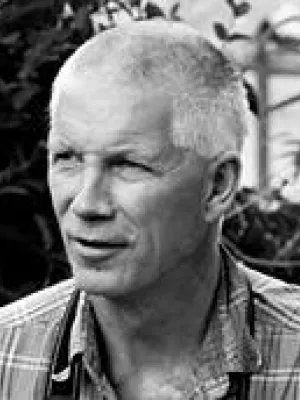
Jonas Ardö
Professor

Patterns and controls of the variability of radiation use efficiency and primary productivity across terrestrial ecosystems
Author
Summary, in English
Aim The controls of gross radiation use efficiency (RUE), the ratio between gross primary productivity (GPP) and the radiation intercepted by terrestrial vegetation, and its spatial and temporal variation are not yet fully understood. Our objectives were to analyse and synthesize the spatial variability of GPP and the spatial and temporal variability of RUE and its climatic controls for a wide range of vegetation types. Location A global range of sites from tundra to rain forest. Methods We analysed a global dataset on photosynthetic uptake and climatic variables from 35 eddy covariance (EC) flux sites spanning between 100 and 2200 mm mean annual rainfall and between -13 and 26 degrees C mean annual temperature. RUE was calculated from the data provided by EC flux sites and remote sensing (MODIS). Results Rainfall and actual evapotranspiration (AET) positively influenced the spatial variation of annual GPP, whereas temperature only influenced the GPP of forests. Annual and maximum RUE were also positively controlled primarily by annual rainfall. The main control parameters of the growth season variation of gross RUE varied for each ecosystem type. Overall, the ratio between actual and potential evapotranspiration and a surrogate for the energy balance explained a greater proportion of the seasonal variation of RUE than the vapour pressure deficit (VPD), AET and precipitation. Temperature was important for determining the intra-annual variability of the RUE at the coldest energy-limited sites. Main conclusions Our analysis supports the idea that the annual functioning of vegetation that is adapted to its local environment is more constrained by water availability than by temperature. The spatial variability of annual and maximum RUE can be largely explained by annual precipitation, more than by vegetation type. The intra-annual variation of RUE was mainly linked to the energy balance and water availability along the climatic gradient. Furthermore, we showed that intra-annual variation of gross RUE is only weakly influenced by VPD and temperature, contrary to what is frequently assumed. Our results provide a better understanding of the spatial and temporal controls of the RUE and thus could lead to a better estimation of ecosystem carbon fixation and better modelling.
Department/s
- Dept of Physical Geography and Ecosystem Science
- BECC: Biodiversity and Ecosystem services in a Changing Climate
Publishing year
2010
Language
English
Pages
253-267
Publication/Series
Global Ecology and Biogeography
Volume
19
Issue
2
Links
Document type
Journal article
Publisher
Wiley-Blackwell
Topic
- Physical Geography
Keywords
- radiation use efficiency
- productivity
- gross primary
- eddy covariance
- Carbon cycle
- climatic controls
- remote sensing
- terrestrial
- vegetation
Status
Published
Research group
- remote sensing
ISBN/ISSN/Other
- ISSN: 1466-8238

